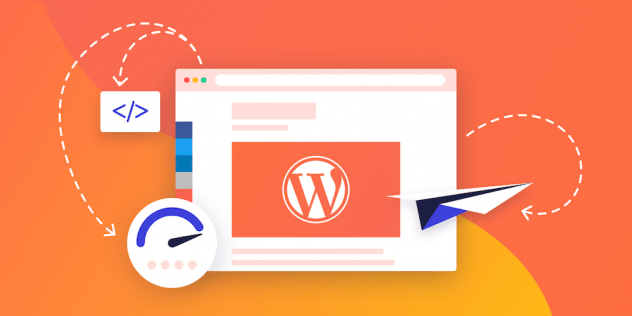- September 3, 2019
- Innomax
- 0
Are you looking for ways to improve the loading speed of your WordPress e-commerce website?
Well, you are in the right place.

Fast loading time on your pages increases the number of page views you get, improves user experience, and helps you with SEO.
Here, I will share 10 ways for you or your WordPress designer to improve the loading speed of your e-commerce website.
Let’s begin!
#1 Use A Caching Plugin
Pages served by WordPress are built dynamically. In order to build the pages, WordPress must launch a new process to get the needed information, assemble it all in one page and then return it to the user.
This involves a lot of processing, and this can really lead to slow responses on your e-commerce website when many people are using your website at the same time.
Therefore, you must request your WordPress developer to use a caching plugin. This can make your e-commerce store anywhere from 2 to 5 times faster.
#2 Optimize The Images
Your website designer may make use of images to make your content livelier and boost user engagement.
Other than that, your online store may have hundreds or even thousands of product images. However, if these images are not optimized for size, they may end up slowing your website.
Therefore, before you upload high-resolution images directly from your camera or phone, use photo editing software and optimize the images for use on the web.
#3 Keep Your Website Updated
WordPress codebase is updated frequently as it is a well-maintained project. These updates not only deliver new features but also fix bugs and security issues.
Therefore, your web developer must ensure that your WordPress e-commerce website, themes, and plugins are always kept updated.
Not staying on top of updates may make your site slower, unreliable, and vulnerable to security threats.
#4 Optimize Background Processes
Processes for backup, publishing scheduled posts, cron jobs that check for updates, search engines and crawlers to fetch data run in the background on your WordPress website.
Some of these like the ones that check for updates and publish content have minimal effect on site performance.
However, that is not the case with all background processes.
Therefore, your WordPress designer must ensure that the processes for backup and crawlers must run only during low-traffic times.
#5 Show Excerpts Instead Of Full Content
By default, your WordPress website displays full content for the articles on the homepage and archives.
This makes your homepage, tags, categories, and archive pages load slower.
Ask your WordPress developer to set your website to show excerpts instead of the full content.
#6 Break Comments Into Pages
Getting a lot of comments on your e-commerce products is a good sign.
The only problem is that loading all the comments at the same time slows your loading speed.
However, you or your WordPress designer can fix this issue easily.
All you need is, to go to Settings > Discussion and select the “Break comments into pages” option.
# 7 Make Use Of Content Delivery Networks
Each CDN server stores static files that are part of your website. These static files are images, JavaScript and CSS, unlike your WordPress pages which are dynamically built.
When you make use of a CDN, whenever a user visits your site, they are provided the static files from the server that is closest to them.
This improves the loading speed of your WordPress e-commerce website.
#8 Use A Speed-Optimized Theme
When your web developer is looking for a theme to use with your website, make sure they pay close attention to speed optimization.
A lot of nice and impressive-looking themes are coded poorly and can slow your website tremendously.
You are better off going with a theme that is simpler rather than choosing a bloated theme with complex layouts.
#9 Optimizing Database
WordPress tends to get slower after some use. This is because the database accumulates lots of information that you may not even need anymore.
You can optimize the database for better performance by getting rid of all the unnecessary data.
Ask your WordPress designer to make use of plugins like WP-Sweep to clean your database by removing revisions, trashed posts, unused tags, etc.
#10 Use Latest PHP Version
WordPress is written in PHP programming language. PHP is a server-side language, which means that it is run on the hosting server.
Your website developer can check the PHP version you are running. Upgrade to the latest PHP version to get the performance boost the new versions provide.
For example, the newer PHP 7 is twice as fast as its predecessors.





